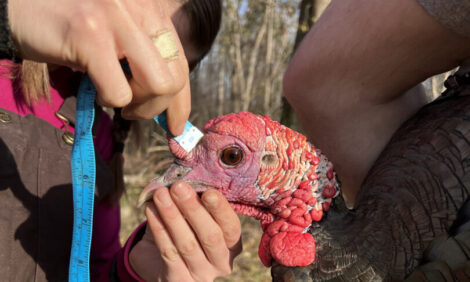



What counts for chick quality?
By Ron Meijerhof, senior technical specialist, Hybro B.V., Boxmeer, The Netherlands - From experience and research we know that the quality of the day-old chick has a big influence on the start of the growing period and consequently on the final performance of the bird.
In the field we increasingly realize that in incubation it is not only a matter of producing as much chicks out of a given number of fertile eggs as possible, but that especially the quality of the day-old chick is important as a money maker.
However, if we want to give an estimate of the quality of the day old chick, we often find that we have to do that in a rather subjective way. Every hatchery manager has an internal picture of what he or she means with a good chick quality, but it is difficult to describe what it is and especially how to measure it.
Visual score
Most people use a purely subjective visual score in terms of good, average and poor chick quality, either for individual chicks or for a whole hatch. Although this score is subjective, it is often rather accurate, as most people will look at a chick more or less in the same way.
The first parameter will often be the colour of the chicks. People want their chicks to be as yellow as possible. Although there is not a lot of literature on the value of this colour, it is not unlikely that it has to do with development. The pigment of the feathers comes from the yolk, and as yolk is the fuel for the development of the embryo, a good yolk uptake will probably mean a more yellow and at the same time a more developed chick. Ofcourse the yellow colour can be induced by formaldehyde in the hatcher as well, but that will not lead to a better-developed chick.
People also look in their visual score at the development of the chicks in general, to the development of the feathers, the firmness of the legs, the size of beak and eyes etc.
Also navel quality is often part of the score, as a poorly closed navel will give more risk of navel/yolk sac infection and mortality. Development will influence this as well, as a better yolk uptake and a smaller yolk residue will make it easier for the bird to close the navel.
The hatched birds must be vital and alert. People will see chicks that have a difficulty staying on their feet as poor quality. This vitality will be influenced largely in the hatcher.
Although a visual score of an experienced hatchery manager gives a good estimate of the quality of the day old chick, and although there are good reasons why a hatchery managers scores the chicks that way, the system remains subjective and poorly repeatable.
Tona or Pasgar score
Several attempts have been made to put the visual score into a repeatable number. More recently the university of Leuven developed the Tona score, which was adjusted by Pas Reform to a more simplified and more practical Pasgar score. Both methods put the visual score of a hatchery manager into a measurable and to some extent repeatable figure. With the methods, a series or observations are scored on a scale from 1 to 10, and trained observers are able to score the quality of the day old chick rather accurate and repeatable. The measurements that are focussed on are for instance chick viability, yolk sac uptake, navel closure, ability of the chick to get up after being placed on its back etc. Until sofar, a strong positive correlation between Tona- or Pasgar score and broiler performance has not been demonstrated, but it can be assumed that their will be a positive correlation between these scores and chick survival in the first week.
Day old chick weight
In many cases, average weight of a day old chick is recorded and used as an indicator for chick quality. Although this is an easy and highly objective measurement, the value is relative. Day old chick weight is highly correlated with egg weight, but does not give a good indication for chick development. This is because chick weight contains of the real chick weight, so the amount of egg that is transformed into chick tissue, and remaining yolk residue. Embryos use the fat in the yolk as fuel for their development, and therefore the deviation between real chick weight (without remaining yolk sac) and yolk residue is an indicator for development. If a lot of yolk is left over, then less development has occurred and the chick quality should be considered lower. However, this doesn’t show in day old body weight.
Yolk free body mass
The yolk free body mass (body weight without residual yolk) is a better indicator for chick development and therefore for the quality of the chick and the incubation process, especially when corrected for initial egg weight. However, taking yolk free body mass is a rather labour intensive method, for which a rather high number of chicks have to be sacrificed, which makes it a less practical method for field evaluation.
Chick length
Another, more practical way to measure chick development is determining the length of the chicken, either by measuring the spinal court length, the shank length or the length of the stretched chicken, measured from tip of the beak to the middle toe. Research within Hybro R&D department has shown that the length of the chicken is a rather accurate way and repeatable way of measuring development, and that large samples of chicks can be checked in a relative short time frame. It has a positive correlation with broiler performance at 6 weeks of age, substantially higher then the correlation between day old body weight and broiler performance.
The length of the chicken is also related with the size of the egg, as is body weight, but to a lesser extent. The total length increases about 5% (from 19 to 20 cm) for breeders from 25 to 60 weeks of age. Length at 18 days can also be used as an indicator for the efficiency of an in-ovo injection process, as it is correlated with the place where the vaccine is administrated (allantios, amnion, breast muscle or neck).
Comparing different methods
If we look at all methods available for measuring chick quality, it seems that the Tona- or Pasgar score and the chick length are having advantages in terms of repeatability, practical applicability and relation with chick quality. However, if we compare Pasgar score and chick length, there is a rather low correlation, and this correlation is sometimes even negative. The reason for this is that the Pasgar score is mainly influenced by the conditions in the hatcher, as factors as navel closure, yolk uptake and vitality have a large influence on the score.
This will influence mainly the condition of the day-old chick and its ability to start and survive the first week. As the customers of incubator manufacturers, ie. hatcheries, are often judged on this, it is logical that for them this is an important criteria. Chick length deals more with development, which is related with the conditions in the setter, and has less influence on the survival change in the first week but more on the performance of the broiler itself.
The reason for the low and sometimes negative correlation can be that a good development in the setter (large chick length) will increase the heat production of the embryo. If this is not compensated in the hatcher by more cooling, the embryo will suffer in the last days and show a relative lower Pasgar score. Depending on the goal of the hatcheries, different scores will be of different values. For an integrated company, where the hatchery is part of the production chain and benefits come from broiler performance, probably a combination of these two methods will be optimal, with approximately 75% of the final score based on broiler growth potential (chick length) and 25% based on the survival rate in the first week (Pasgar score).
Source: Hybro B.V. - May 2005








